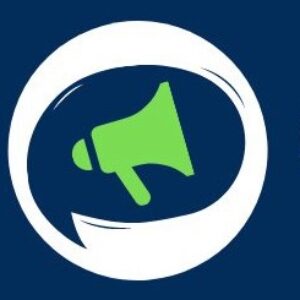When you think of your career growth, where do you see yourself in the future years? What do you see yourself doing in your career? Do you think you’d have progressed beyond that stage or otherwise? This is where a career development plan comes into the picture. In whatever field you’re in, you might have career aspirations you intend to achieve or something significant that would speak for you in your resume, but when you have no idea on how to go about it or make it happen, you have a career development plan to be your guide for that.
Drafting a career development plan will give you a foresight into what you want to do next and how to go about it in your career. It helps you with writing a strategic plan and setting action goals to achieve them. A career plan should be your first step if you’re looking to advance your career or just starting.
In this article, we’ll explore the steps you need to take in creating your career development plan.
What Is A Career Development Plan?
A career development plan serves as both a personal guide and a tool that helps individuals figure out what skills they want to get better at and how to reach their career goals. It’s not just a price of written text on a paper; it’s a step-by-step plan that keeps you on track and helps you to break overwhelming and unattainable goals into smaller goals making sure you’re moving forward in your career in a smart and clear way. A career development plan is also a document also known as a professional development plan that helps resource departments and management teams with the necessary information needed to support their employees’ growth and success.
A standard career development plan should include the following:
- A clearly defined career goal- both long-term and short-term
- Analysis of your current skills and areas of improvement
- Strengths and Weaknesses
- Actionable steps to take
- A realistic timeline for achieving goals.
A well-crafted career development plan addresses various aspects and ensures a comprehensive approach to personal and professional growth.
Steps To Craft An Effective Career Development Plan
Evaluate Your Current Position
If you’re keen on crafting a perfect career development plan, you have to honestly identify where you are presently in your career. It’s important to make a list of your skills and focus on the areas that need improvement.
You should ask yourself questions like:
- What past experiences do I have
- What about my career do I enjoy doing
- What are skills and talents?
Allocate some time to jot down responses to these inquiries. Outline your present standing in your field, indicating whether you’ve completed your education or aspire to pursue further graduate studies, and identify your position on the career hierarchy.
Identify Your Destination
The next step is to envision your ultimate goal, like how far you want to go in your career, as this will help you let go of any obstacles and setbacks that might be holding you back.
Are you aiming for a more senior role within your current company, exploring opportunities at a different organization, or contemplating a career transition? Ensure that your objectives resonate with your core motivations. After completing these initial two steps, you’ll gain insight into your skills and available career paths, setting the stage for assessing the path to your desired future career.
What Are The Necessary Requirements You Need?
A solid support system, including mentors and professional networks, enhances your journey. It’s important to ensure alignment between your aspirations and the organizational culture.
To develop an effective career development plan, consider essential requirements such as a clear understanding of your professional goals, a comprehensive self-assessment to identify strengths and areas for improvement, and a realistic timeline for achieving milestones. Acquiring relevant skills and knowledge through continuous learning, networking, and staying abreast of industry trends is vital.
Setting Strategic Goals
Crafting your career development plan centers around defining and outlining your goals because, without clear goals, you risk struggling with minor setbacks in your career journey.
Your long-term goal might be to become a senior product designer but to achieve this, you need to break it by setting short-term goals first like expanding your skill set, attending training, taking courses or related courses, and having a mentor. These short-term goals act as stepping stones to guide your path. Setting goals provides direction and purpose, guiding your actions toward tangible achievements. Additionally, incorporating realistic goals ensures they are attainable and align with your capabilities.
Lastly, make sure your goals follow the SMART framework: SMART stands for
S- Specific: Clearly define your goal by specifying a particular target. Instead of a vague aim like “improve to coding skills,” make it specific, such as “complete an online Python programming course”
M- Measurable: Establish measurable steps to track progress toward your target. For instance, “complete 80% of the Python course modules within three months” provides a clear measure of achievement.
Achievable: Ensure that your target is realistic and attainable.
Relevant: Ensure that your target aligns with your broader objectives and is relevant to your career aspirations.
Time-Bound: Set a specific timeframe for reaching your target. For example, “finish the Python course within three months” adds a timeline to your goal, providing a sense of urgency.
Regularly achieving milestones within this framework not only boosts your confidence but also becomes a source of motivation, affirming your progress and propelling you toward your maximum career success.
Measure Your Progress And Reevaluate
A career development plan isn’t a one-time creation; its true essence is in the ongoing process of implementation. Continuous monitoring involves regularly assessing your actual progress against the established timelines. Checking in at least twice a year ensures that you remain on track and stay true to the intended timeline you’ve set for yourself.
Beyond merely working through your skills and experiences, pinpoint measurable milestones that signify progress in your career. These could be positive performance reviews, getting a course, earning a certification, or even recognition through awards – each acting as a tangible addition to your professional journey.
Acknowledge that unexpected events happen. You should prepare for a sudden job opportunity, a relocation, or other unforeseen factors that may redirect your course. Learn to adapt to the flexibility in order to adjust your plan accordingly. Recognize that the plan is not rigid; periodic reviews allow you to update goals in sync with your evolving life circumstances.
In conclusion, think of your career plan as a helpful guide to reaching your goals. Keep checking and adjusting it to stay on the right path as things change. Setting small goals along the way helps you see your progress and keeps you motivated. Starting your plan early is super important because it gives you a head start. It helps you take control of your career journey, grab opportunities, and build a job that makes you happy. Getting this plan going early sets you up for success by making you flexible and ready for whatever comes your way in your career.
References
https://www.upwork.com/resources/career-development-plan
https://www.indeed.com/career-advice/career-development/steps-to-create-a-career-development-plan





